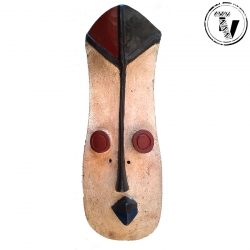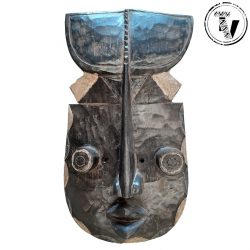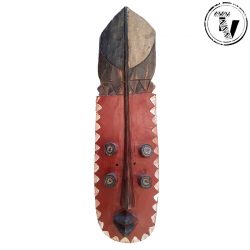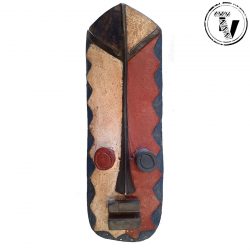Description
Bwa Sun Africa Mask
is danced at planting and harvest time
as supplication or thanks for a good harvest.
The Bwa people live in central Burkina Faso.
in years past they have been associated erroneously with the Bobo.
In fact, they are not related to the Bobo at all,
and their languages and culture are quite different.
The Bwa people speak a language in the voltaic family
of languages, while Bobo speak a language in the Mande family.
The confusion was caused in the past by the inability
of the French to distinguish between the two people through their Jula interpreters.
The Bwa people are very similar to other peoples in Burkina
Faso in their lack of centralized political authority.
Traditionally they have no chiefs.
In contrast, the Mossi people who live just to the east,
have a strong system of chiefs and kings.
the result is that while the Mossi are conservative and
resistant to change, the Bwa are open-minded and receptive to change.
The Bwa produce several different kinds of masks
including leaf masks dedicated to the god named Dwo,
The style of the Bwa is well-known to collectors and scholars around the world.
These are wooden masks that represent animals,
or tall broad plank masks that represent the spirit Lanle.
They are covered with red white and black graphic patterns
that represent the religious laws that people in the villages
must obey if they are to receive God’s blessings.
These well-known patterns are not decorative,
they are graphic patterns in a system of writing that can
be read by anyone in the community who has been initiated.
They include black-and-white checkerboards, that look
like a target, zig-zag patterns that represent the
path of the ancestors, X patterns, and crescents.
Masks are used in a variety of different contexts.
They appear at funerals of senior elders both male and female.
They appear at initiation’s when young men and
women are taught the meanings of the masks and the
importance of the spirits and enter adult village society.
They even appear on market days when their performances
attract visitors to the local market, where they are likely
to spend more cash, plus helping the economy of the community.






